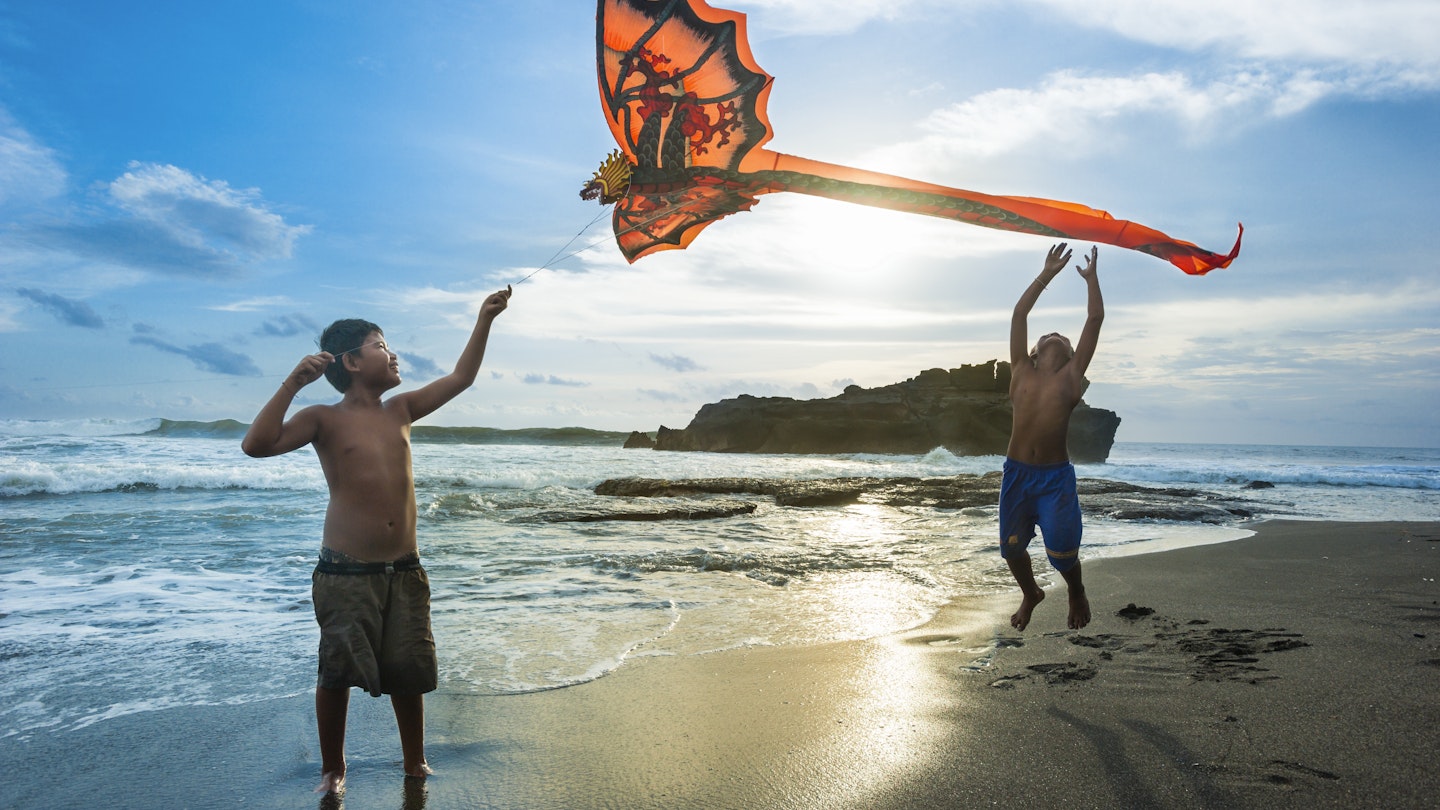Summary of Best Times to Visit Indonesia

Historically, Indonesia featured two straightforward seasons: wet and dry. However, recent developments in climate dynamics, exacerbated by El Niño and La Niña phenomena, have led to increasingly unpredictable weather patterns.
Currently, while specifying the ideal locations for optimal weather conditions may be complex, Indonesia remains a favorable tourist destination year-round.
Moreover, various factors play a role beyond mere weather. Numerous travelers prioritize the best times for activities such as surfing, volcanic ascents, and wildlife encounters with orangutans or whale sharks. Others may seek beach parties, vibrant festivals, or simply wish to evade the masses. While there are diverse considerations, we are equipped to provide assistance. Whether you are drawn to surfing, beach relaxation, jungles, or exhilarating festivals, below is our guide on the optimal timings for a visit to Indonesia.

The High Season (July–August, Christmas & New Year’s Eve): Optimal for Ideal Weather and Festivities
The peak travel season in Indonesia occurs primarily during July and August. This period aligns perfectly with favorable sunny weather and coincides with European summer and Australian winter vacations, resulting in heightened tourism activity throughout the islands. If crowds are not a concern, this lively season offers a vibrant travel experience. Notably, Bali and Lombok thrive during this time, attracting large numbers to their beaches and nightlife. Furthermore, it is an ideal period for trekking, surfing, diving, and various outdoor adventures, excluding regions such as West Papua and Maluku, which experience substantial rainfall in July and August.
However, the influx of tourists means crowded beaches, congested attractions, busy hiking trails, and significant traffic delays, not to mention elevated accommodation rates and airfare. To offset potential costs, advanced planning is essential, with reservations required several months ahead of time. The Christmas season also sees a rise in both tourism and prices, accompanied by increased humidity and rainfall.

The Shoulder Season (March–June & September–November): Prime for Wildlife Interactions
Characterized by excellent weather, reduced tourist density, and favorable pricing, the shoulder seasons at both ends of the peak period present some of the most appealing times to visit Indonesia. While occasional rain (notably in March and November) is possible, it is far more common to encounter splendid, sunny days during this period.
This timeframe is particularly advantageous for outdoor activities. Surfing conditions are optimal, orangutans roam freely in the jungles of Sumatra and Kalimantan, while divers pursue notable sightings, such as whale sharks and mola molas (sunfish) which aggregate from June to September. Furthermore, shoulder seasons afford ideal trekking opportunities on Indonesia’s volcanos without the burden of overwhelming crowds.
Nevertheless, the shoulder season may present some challenges, including occasional haze from agricultural burning in Sumatra and Kalimantan from September to November. Those with respiratory sensitivities should be mindful of this potential issue.

The Low Season (January–February): Ideal for Cost-Effective Travel
The rainy season may evoke apprehension among travelers aiming for sunshine and sandy shores. Nevertheless, despite the humidity and potential for frizzy hair, it is essential to understand that the rainy period does not equate to unceasing downpours throughout your stay. Instead, brief and intense showers typically occur, followed by the return of clear skies and sunshine.
Diminished tourist numbers during these months result in a more tranquil atmosphere along with discounts on accommodations and activities. Traveling during the off-peak season presents an excellent opportunity to engage with local cultures and visit iconic temples across Java and Bali free from the usual crowds. However, it is worth noting that this period may not be suitable for hiking, as many volcanoes are closed from December to March. Spotting orangutans and other wildlife can also prove challenging during these rainy months.
If you wish to escape excessive rainfall, consider heading to West Papua and Maluku, which enjoy dry seasons at this time. For those interested in hiking to remote villages or exploring the unparalleled coral reefs of Raja Ampat, this period offers perfect conditions, characterized by calm waters and exceptional visibility for underwater adventures.

Focused Approach: When is the Optimal Time to Visit Bali?
For numerous travelers, Indonesia is synonymous with Bali. There are specific periods deemed most favorable for visiting this iconic island. Conditions are typically ideal during the intervals preceding and following the peak travel season, specifically from May to June and throughout September. Not only does this timing offer exquisite beach conditions, legendary surf, breathtaking volcanic treks, powerful waterfalls, yoga retreats, and rich Hindu heritage, but it also allows for experiences largely free from the usual tourist congestion. Moreover, travelers can avoid the necessity for extensive advance bookings and enjoy cost savings when compared to high season pricing.
Does Traveling During the Rainy Season Detract from My Experience?
If your aim is a relaxed getaway and you appreciate cost-effective travel, visiting Indonesia during the rainy season might be a beneficial option. While rain is certainly expected from December to February—sometimes in significant amounts—it does not guarantee constant rainfall. Typically, brief showers may occur primarily in the afternoons, offering ample opportunity for activities under the sun post-rain. Nevertheless, if your itinerary includes trekking, diving, surfing, or wildlife observation, scheduling your journey during the drier months from April to October is advisable.
This article was first published on April 21, 2021, and was updated on November 28, 2023.





